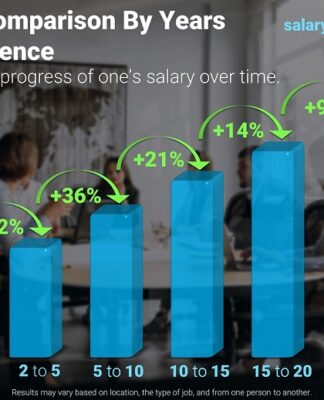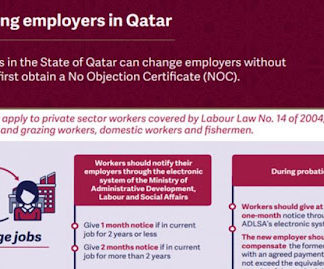Lending Is Ripe for an Instant Disbursements Transformation
BY PYMNTS | APRIL 11, 2023
|
Download the PYMNTS and Ingo Money April 2023
Download the PYMNTS and Ingo Money April 2023 “Money Mobility Tracker®: How Instant Loan Disbursements Could Drive Lenders Growth”
As inflation rises and recession looms, consumers are anxious about their finances. With 48% of consumers less likely to take out a loan since interest rates have increased, banks must provide an enhanced lending experience to stay competitive. Borrowers want a faster and more convenient lending process, with 35% of consumers believing they should be able to complete a loan application in less than two hours.74%: Share of mortgage borrowers who believe the time to close should be within three weeks
Additionally, small to midsized businesses (SMBs) are looking for a fast lending experience with immediate funds availability from lenders and are willing to switch to FinTechs if legacy banks fail to deliver. However, increasing fraud complicates the digital lending experience, with phishing being the most common scam. Lenders can reduce fraud while making more accurate credit decisions and delivering them faster through technology adoption and data automation.
The “Money Mobility Tracker®” explores how borrowers are demanding a faster lending experience amid challenging economic conditions and how lenders can deliver by leveraging technology to reduce fraud and make accurate credit decisions.
Around the Money Mobility Space
Credit unions can improve consumer satisfaction by modernizing their lending process through a more user-friendly, faster and safer loan origination system. Recent research found that banks and FinTechs saw increased customer satisfaction due to superior digital and mobile banking features, while CUs fell slightly. With lending being one of CUs’ strong suits, automated decisioning could boost satisfaction by accelerating underwriting and making the loan approval process faster for low-risk borrowers.66%: Portion of European SMBs that want faster access to credit
Speed is highly coveted across lending, evidenced by consumer demand for a faster mortgage process, with nearly 3 in 4 consumers wanting to complete the process within three weeks. A streamlined, digital mortgage process that reduces in-person meetings and increases transparency could improve customer experience.
For more on these and other stories, visit the Tracker’s News and Trends section.
The Inside Take on AI’s Role in Streamlining Lending for All
Artificial intelligence (AI)-powered algorithms can analyze vast amounts of data and automate most loan approvals and disbursements in minutes, but lenders must avoid building a “black box” of technology that makes decisions without transparency or fairness.
To get the Insider POV, we spoke with Anuj Nayar, senior vice president and financial health officer at LendingClub, to learn how AI can drive faster payments and financial inclusion in the lending process.
Partnering to Power Growth With Instant Loan Disbursements
35%: Share of consumers who believe they should be able to complete a personal loan application in less than two hours
Instant loan disbursements are in high demand, but lending has been slower to advance digital transformation due to perceptions about security. Modern loan systems offer updated features such as data automation, improved data management and integration with AI and compliance tools, enabling a frictionless and secure experience for borrowers and lenders.
FinTech lenders have made significant strides in instant disbursements, and top banks are now partnering with them to win and retain customers. With the lending space ripe for increased instant disbursement adoption, bringing lending into the digital revolution could be a crucial driver of banks’ growth.
To learn more about instant disbursements in lending, read the Tracker’s PYMNTS Intelligence.
About the Tracker
The “Money Mobility Tracker®,” a collaboration with Ingo Money, examines how borrowers seek a faster lending process in the face of a challenging economy and how lenders can leverage technology to reduce fraud, make accurate credit decisions and deliver a faster lending experience.
RECOMMENDED
Instant Payouts Essential to Growing Sports Betting Industry
Instant Disbursements Adoption Struggles Due to Data Security Fears and Fees
Lending Platforms Plunge as Tech Rout Sends FinTech IPO Index Down 4.9%
Instant Checkout Satisfies Consumer Demand for Digital-First, Omnichannel Commerce
SEE MORE IN: DATA AUTOMATION, FEATURED NEWS, INGO MONEY, LENDERS, LENDING EXPERIENCE, LENDING PROCESS, LENDINGCLUB, LOAN APPLICATION, LOAN APPROVAL, MONEY MOBILITY TRACKER, NEWS, TRACKER SERIES
Inventory Data Hints at Summer Slowdown — and Main Street Merchant Markdowns
BY PYMNTS | APRIL 11, 2023
|
When goods pile up on shelves and in wholesale channels, markdowns loom.
And among the latest spate of economic data, there are hints that a summer slowdown for many merchants may be in the offing.
As reported by the Census Bureau on Monday (April 10), U.S. wholesale inventories were up in February, where there had been a decline in January. The data shows the inventories of U.S. merchant wholesalers rose 0.1% in February compared with the previous month after declining 0.4% in January.
Delving into the details, the latest report shows seasonally adjusted inventories of apparel, as measured month over month, were up 2.4% vs. January. In January, apparel inventories were up 0.7%. Alcohol inventories were up a respective 2.1% and 5%; among durable goods, the automotive businesses saw inventories swell by 0.5% and 1.7% month to month as measured in February and in January.
Importantly, the ratio of inventories to sale — a read-across of how many months that it takes to clear out that inventory — has proven volatile. That ratio barely budged, at 1.37 in February, down from 1.38 in January, but higher than the 1.24 in February 2022.
The wholesale inventories might be viewed as a harbinger of things to come: Wholesalers sell products in bulk, as goods end up on retailers’ shelves and on showroom floors. The merchants, of course, then sell the goods — whether a shirt or a case of wine — to end consumers.
The fact that we’re seeing a bit of buildup in wholesale channels hints that orders from at least some consumer-facing businesses may be slowing down. And that hints that the merchants have enough goods on their shelves — and indeed, are trying to get the shelves to be a little less crowded. Where there are shelves burdened with inventory that’s not moving, markdowns are in the offing.
Impact on Main Street
The impact may be most keenly felt by Main Street small and midsize businesses (SMBs). As detailed in the latest PYMNTS survey of these smaller firms that power the U.S. economy, retail SMBs are bracing for the worst — 65% say they believe a recession will begin in the next 12 months, 54% of food and drinking establishments say the same, and 43% of firms, overall, say inflation stands among their most significant challenges.
There are some indications that the credit crunch that’s taking shape will hamper the ability to buy inventory. It takes money to make money, as the saying goes, which in this case means that companies have to have capital on hand to run operations and buy the goods from wholesalers that ultimately line their shelves. A significant 44% of the retailers we’ve surveyed state that they have no financing available. Without financing on hand, they cannot buy the capital stock they need if demand materializes.
As for that demand — we’ll get more color on inventory and consumers’ appetite to spend as earnings season gets underway beginning this week. Separate PYMNTS reporting, here, shows a pullback in discretionary spending. Less than 20% of consumers in the middle-income bracket — those earning $50,000 to $100,000 annually — expect to purchase big-ticket electronics, clothing or gifts in 2023. And a full 69% of consumers queried by PYMNTS have been “trading down” to cheaper merchants.
The wholesalers may be signaling tougher times ahead for Main Street’s merchant mainstays.






























